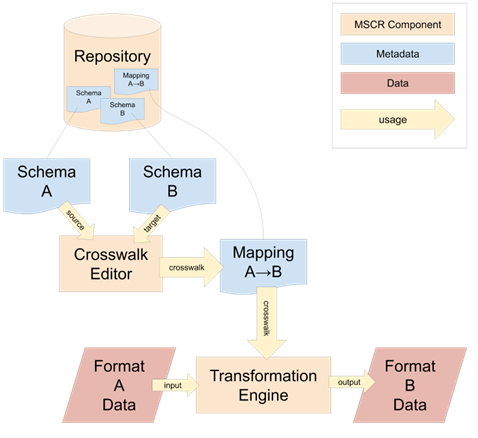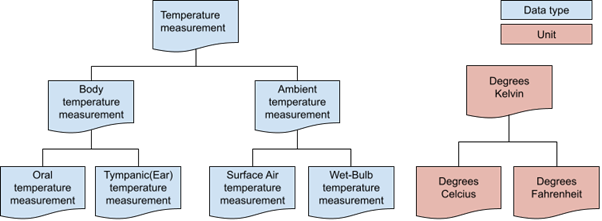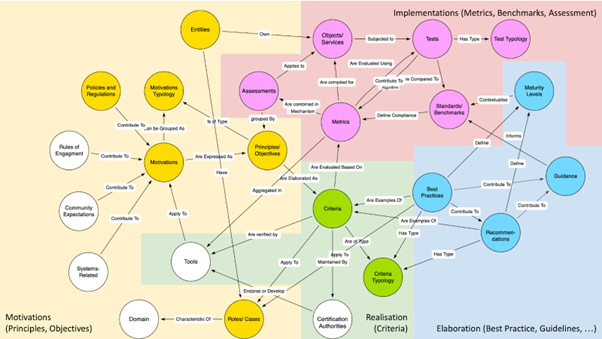D6.1: Guidelines for the usage of components for technical and semantic interoperability in cross-domain use cases
Aims, scope, and structure of the deliverable
This deliverable, D6.1 – Guidelines for the usage of components for technical and semantic interoperability in cross domain use cases, aims to provide actionable guidance for achieving semantic and technical interoperability in the European Open Science Cloud (EOSC), especially in the context of cross-domain research and data integration.
Interoperability—defined as the ability of different systems and organisations to work together effectively—is a foundational principle of FAIR (Findable, Accessible, Interoperable, Reusable) digital objects and critical to the success of EOSC. The current deliverable focuses on the two challenging and interdependent dimensions: technical interoperability (concerning data exchange mechanisms, protocols, and system integration) and semantic interoperability (concerning shared understanding of data through vocabularies, ontologies, and metadata).
In this deliverable, we evaluate core EOSC interoperability components – such as the Metadata Schema and Crosswalk Registry (MSCR), PID Graph, Data Type Registry (DTR), and Compliance Assessment Toolkit (CAT) – and analyse the use of these components in representative cross-domain projects. We also introduce a set of practical metrics and checklists that align with the EOSC Interoperability Framework (EOSC IF) and Cross-Domain Interoperability Framework (CDIF), supporting both assessment and implementation.
Overall, this deliverable provides a comprehensive guide for improving interoperability across disciplines, enabling more effective data sharing and reuse within EOSC. It emphasises the importance of practical, well-documented solutions and the adoption of common standards, while recognising the evolving role of artificial intelligence in supporting future scalability and automation.
Description of selected EOSC components
This section explores the core EOSC interoperability components developed in EOSC funded projects, with a particular focus on how these components address interoperability and their integration in the EOSC Federation.
The Metadata Schema and Crosswalk Registry (MSCR), Data Type Registry (DTR), and Compliance Assessment Toolkit (CAT) have been developed to directly address key recommendations for achieving cross-domain interoperability within EOSC.
Metadata Schema and Crosswalk Registry (MSCR)
| EOSC Component: Metadata Schema and Crosswalk Registry (MSCR) Developed by: FAIRCORE4EOSC Core functions: Repository for Schemas and Crosswalks, Tool to maintain crosswalks PID |
Purpose:
The Metadata Schema and Crosswalk Registry (MSCR) is designed to support the discovery, registration, and management of crosswalks and their source and destination schemas. It enables communities to document, publish, and share their schemas, and to create corresponding crosswalks that promote interoperability, data integration, and reuse across domains.
Description:
MSCR allows the registration of both source and target schemas, along with crosswalks that describe the semantic mappings of data from one schema to another. It supports versioning for all entries and assigns persistent identifiers (PIDs) to registered and published schemas and crosswalks. Existing PIDs may also be used and will be promoted for referenced entries. Crosswalks maintained outside the registry can be registered by reference, ensuring that the MSCR can accommodate decentralised workflows and federated governance models.
The registry supports a variety of machine-readable schema formats including JSON Schema, XML Schema, CSV, SKOS, OWL, and SHACL. Schemas in unsupported formats can still be registered, accompanied by a human-readable PDF describing the format. Crosswalks are stored in an internal format, and crosswalks in SSSOM format can be imported and further edited using the MSCR. While the MSCR may not parse all formats natively, it maintains the ability to register and track crosswalks regardless of format.
The MSCR includes a Transformation Engine that leverages its internal crosswalk specification to perform data transformations. This engine takes full advantage of the expressiveness and capabilities of the internal representation of mappings. To support interoperability with external tools, crosswalks can be exported into widely used transformation specification formats such as XSLT, RML, or SSSOM. However, due to differences in format expressiveness, not all transformation logic defined in the internal format may be fully preserved in the exported versions.
MSCR includes a governance model with system-level administrators who manage groups, and group administrators who oversee their respective group’s entries. The platform provides API key management to support programmatic access and integration. It also interfaces with the Data Type Registry (DTR) to ensure consistent use and interpretation of data types across registered schemas. Together, these features make the MSCR a flexible and robust tool for managing the complexity of metadata standards and their mappings.
Workflow:
Figure 2 shows the main components of the MSCR. The Repository contains Schema A and Schema B. These are loaded as source and target schemas into the Crosswalk Editor to create a crosswalk resulting in a mapping from A to B, that is also placed in the repository. The Transformation Engine loads the crosswalk to transform data in format A into data in format B.

Figure 2. MSCR Components
Data Type Registry (DTR)
| EOSC Component: Data Type Registry (DTR) Developed by: FAIRCORE4EOSC Core functions: Repository for Data Types, Governance of Data Type descriptions |
Purpose
The main purpose of the Data Type Registry (DTR) is to provide a centralised, structured, and extensible environment for defining, managing, and sharing data types in EOSC. The purpose of having a centralised registry of data type definitions is to enhance interoperability by encouraging the reuse of existing types across scientific domains whenever possible.
Description
The DTR is a key component of the EOSC Interoperability Framework, offering a structured approach to registering and managing data types used in metadata descriptions, scientific datasets, and digital objects. It provides:
- A graphical user interface (GUI) to allow users to visually create, browse, and manage types.
- A REST API supporting CRUD operations, including batch uploads and programmatic access to data types.
- A user and group management system, enabling fine-grained access control over types and collaborative editing.
Types within the DTR can have rich, structured definitions. This includes relationships such as type inheritance (taxonomy), and associations with units of measurement or controlled vocabularies. The DTR supports not only human-readable documentation of data structures but also machine-readable semantics. As an example, the MSCR integrates with the DTR.
The DTR is built on the Cordra software, which is a partial implementation of the Digital Object Architecture (DOA), making data types available through the Digital Object Interface Protocol (DOIP).
An extension of the registry, known as the TypeAPI, provides additional functionalities such as JSON Schema generation for type definitions, facilitating validation of an object's conformance to a specific type.
The DTR assigns a PID to any published data type in the register ensuring its unambiguous identification. DTR also registers taxonomy components and units of measure to standardise these across the data type descriptions.
Workflow

Figure 3. An example of how taxonomies of data types and units associated with temperature measurements could be represented and managed using the DTR.
Compliance Assessment Toolkit (CAT)
| EOSC Component: Compliance Assessment Toolkit (CAT) Developed by: FAIRCORE4EOSC Core functions: Systematic scoring of compliance with policies and guidelines. |
Purpose
The Compliance Assessment Toolkit (CAT) is developed to support the systematic and standardised assessment of compliance with policies adopted within the European Open Science Cloud (EOSC).
Description
Achieving the EOSC vision of seamless interoperability for FAIR Data and Services relies on the consistent implementation of policies that promote semantic and technical interoperability. Across EOSC and the broader research community, a substantial body of policy recommendations has emerged to guide this effort. The Compliance Assessment Toolkit (CAT) provides a structured approach to operationalise these policies.
The Compliance Assessment Toolkit (CAT) is not only a tool for evaluating compliance but also a framework for designing and formalising policies. It comes equipped with an advanced conceptual model that guides policy makers and stakeholders in structuring and motivating policies from the ground up.
CAT supports the full policy development lifecycle by:
- Providing a systematic method to articulate the motivations and objectives behind a policy.
- Offering a general framework to define principles, translate them into criteria, and specify metrics that enable objective assessment.
- Enabling the use of different rubrics to tailor scoring and evaluation methods according to roles, domains, or implementation settings.
This structured approach ensures that policies are not only clearly articulated, but also measurable, actionable, and adaptable across diverse EOSC contexts. By using CAT to evaluate a service, implementers of EOSC services are equipped with a practical framework to assess and improve their alignment with EOSC policies, thereby contributing to a more interoperable EOSC ecosystem. CAT thus enhances both the quality and the enforceability of EOSC policies.
The CAT tool has been developed by the FAIRCORE4EOSC project and has been used to implement an assessment that addresses compliance with the EOSC PID policy for persistent identifiers.
The CAT provides a very generalised formal approach to turn recommendations into a policy with usable controls and can thus be used broadly to implement compliance controls in relation to any EOSC policy for technical and semantic interoperability.
Workflow

Figure 4. CAT’s advanced conceptual model provides a structured framework for formulating policies —linking motivations and objectives to clear criteria and measurable metrics for assessing implementation
Cross-domain use cases
This section adopts the EOSC IF’s multi-level interoperability model as the guiding structure for analysing a series of cross-domain use cases.
The projects AquaInfra, Blue-Cloud, EOSC4Cancer, FAIR-EASE, EOSC Future, SciLake, and WorldFAIR were selected for their diversity and representativeness across various scientific disciplines, data types, and interoperability challenges. Each project provides concrete and pertinent examples for analysing technical and semantic interoperability issues within the EOSC ecosystem.
| AquaInfra | https://eosc.eu/eu-project/aquainfra/ |
| Blue-Cloud | https://eosc.eu/eu-project/blue-cloud-2026/ |
| EOSC4Cancer | https://eosc4cancer.eu/ |
| FAIR-EASE | https://fairease.eu/ |
| EOSC Future | https://eoscfuture.eu/ |
| SciLake | https://eosc.eu/horizon-europe-projects/scilake-project/ |
| WorldFAIR | https://worldfair-project.eu/the-project/ |
Conclusions and guidelines
Overall, the examined projects largely comply with CDIF and EOSC IF guidelines; nevertheless, practical implementation highlights the necessity of refining these guidelines with concrete examples and specific recommendations. Additional guidelines focusing on interdisciplinary metadata management, mappings and crosswalks, and best practices for semantic artefact publication and management could significantly enhance interoperability within the EOSC community.
Therefore, in the final section of this deliverable, as well as the appendices, we focus on guidelines for using these components in various scenarios. Intended for users who want to use these components to address recurring interoperability problems, such as mappings, these guidelines cover multiple themes, ranging from the description of the AAI system to software interoperability.
As a complement to the guidelines, we have also considered the use of AI to support interoperability tasks. The prototypes developed can be found in the appendices.